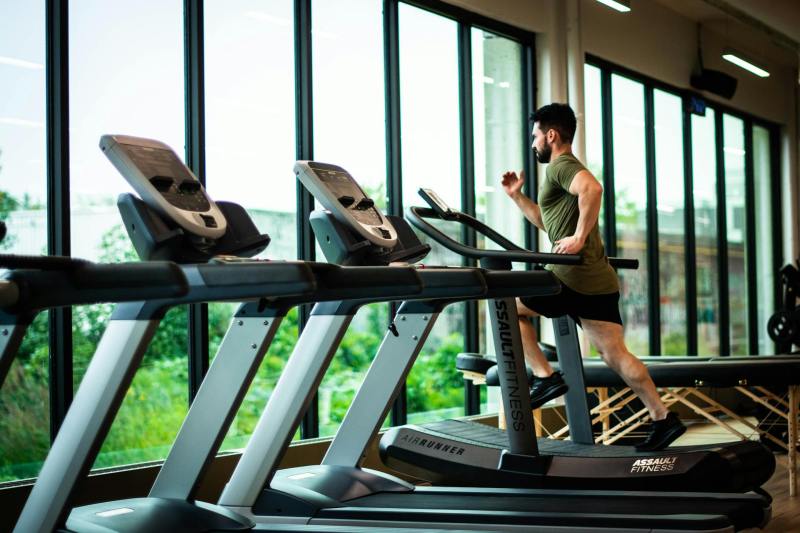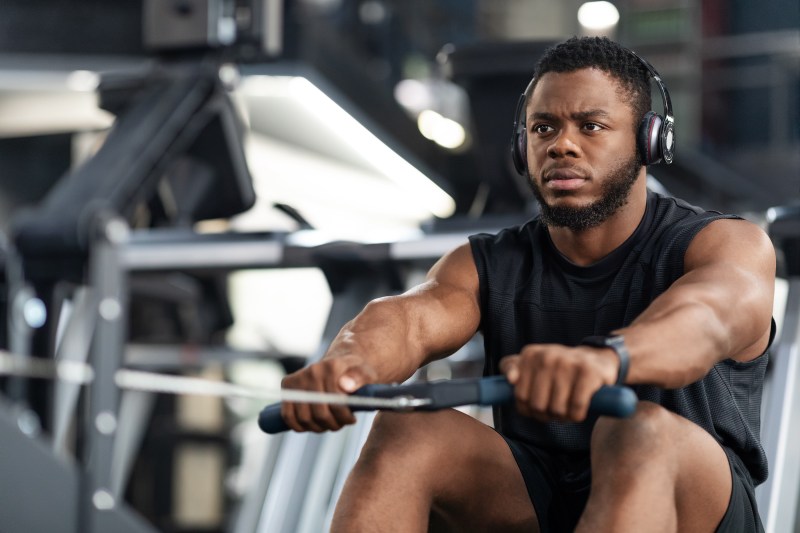It can be a bit overwhelming being in the gym but not knowing the best equipment to use, as there can be a lot of options. As a personal trainer, I always recommend having a game plan before stepping into the gym, as doing random exercises will help you burn calories, but won’t be efficient for helping you reach your goals at the end of the day.
So, when it comes to cardio, what should you do? I have outlined five of the most popular cardio machines, as well as their pros and cons, who they are best for, and an example workout to help give you some guidance. Let’s dive in!
Treadmills

Treadmills are a staple in most gyms and a favorite for people who enjoy walking, jogging, or running indoors. They provide a straightforward way to build cardiovascular endurance and can be easily adjusted to suit your fitness level, whether you’re just starting out or training for a race. With customizable speed and incline settings, treadmills offer variety and can be used for both steady-state and interval workouts.
Pros:
- Adjustable speed and incline for varied intensity
- Effective for weight loss and improving heart health
- Simulates outdoor running without weather concerns
Cons:
- High-impact on joints, especially the knees and hips
- Can feel repetitive or boring over time
Treadmills are an excellent option for runners, walkers, or anyone training for endurance events. However, those with joint pain or looking for low-impact alternatives may want to consider machines like the elliptical or stationary bike instead.
Example workout: Warm up with a 5-minute walk, then alternate between 1 minute of jogging (6.0 mph) and 2 minutes of walking (3.5 mph) for 20 minutes. Cool down for 5 minutes.
Ellipticals

Ellipticals offer a smooth, low-impact workout that mimics a mix of stair climbing and running. The gliding motion reduces stress on the joints, making it perfect for those wanting to get their heart rate up without the pounding that comes with running. Most models feature moving handlebars, so you can engage your upper body as well, making this machine ideal for full-body conditioning.
Pros:
- Low-impact on joints, ideal for injury prevention or rehab
- Works both the upper and lower body simultaneously
- Multiple resistance and program options for varied workouts
Cons:
- May feel unnatural or awkward to new users
- Less effective for building bone density compared to running
Ellipticals are best suited for beginners, those recovering from injuries, or anyone looking for a joint-friendly cardio option. They may not be ideal if you’re focused on high-impact sports performance or want more muscular engagement in your lower body.
Example workout: 5-minute warm-up at low resistance, then 30 seconds hard effort / 90 seconds easy for 20 minutes. Finish with a 5-minute cool-down.
Rowing machines

Rowing machines are an underrated powerhouse when it comes to cardio equipment. They simulate the motion of rowing a boat and deliver a full-body workout that targets the legs, back, arms, and core — all while being low impact. With proper form, rowing is not only a great cardio exercise but also builds muscular endurance.
In fact, according to an NIH study, “[after rowing], fat mass and total body fat percent decreased significantly [in subjects]. In the fitness test, back strength and trunk flexion score increased significantly.”
Pros:
- Engages both upper and lower body muscles
- Low-impact, reducing joint strain
- Efficient calorie burner in a short amount of time
Cons:
- Requires proper form to prevent back strain
- Can feel repetitive or technique-heavy for beginners
Rowers are ideal for people who want a time-efficient, full-body workout or are training for endurance. However, those with chronic back problems or poor posture awareness might find rowing uncomfortable or risky without proper guidance.
Example workout: After a 5-minute warm-up, do intervals — 1 minute of hard rowing (aim for >26 strokes/min) followed by 1 minute of light rowing — for 20 minutes. Cool down for 5 minutes.
Stairmasters

The Stairmaster is designed to mimic climbing an endless flight of stairs, providing a tough cardio and strength challenge for your lower body. It helps tone your glutes, quads, and calves while also improving cardiovascular fitness. While the motion feels simple, maintaining proper form is key to avoiding overuse injuries or imbalances.
Pros:
- Great for toning and strengthening the lower body
- High calorie burn in a short time
- Improves cardiovascular endurance and leg stamina
Cons:
- Can be hard on knees and ankles
- Poor form (e.g., leaning heavily on rails) reduces effectiveness
Stairmasters are excellent for people who want to build lower body strength while getting in a serious sweat session, especially hikers or athletes in sports requiring leg power. Those with knee issues or balance concerns may need to look for more stable, joint-friendly options.
Example workout: Start with a 3-minute warm-up at level 3, then alternate between 1 minute at level 8 and 2 minutes at level 4 for 20 minutes. Finish with a 3-minute cooldown.
Stationary bikes

Stationary bikes provide a reliable, low-impact cardio option that’s perfect for all fitness levels. Whether you prefer upright bikes or recumbent models, these machines are easy on the joints and can still deliver a challenging cardiovascular workout. Resistance control and structured programs provided by stationary bikes work well for steady-state training or high-intensity intervals.
Pros:
- Gentle on the knees, hips, and ankles
- Great for interval training and long cardio sessions
- Easily accessible for beginners or those in rehab
Cons:
- Primarily lower-body focused
- Long sessions may cause saddle discomfort
Stationary bikes work well for people recovering from injuries, older adults, or anyone looking for a cardio workout with minimal joint strain. They’re less ideal for people seeking a full-body workout or who find prolonged seated exercise uncomfortable.
Example workout: 5-minute easy ride, then 30 seconds high resistance sprint / 90 seconds easy pedaling, repeated for 20 minutes. Cool down with 5 minutes of steady, light resistance pedaling.




